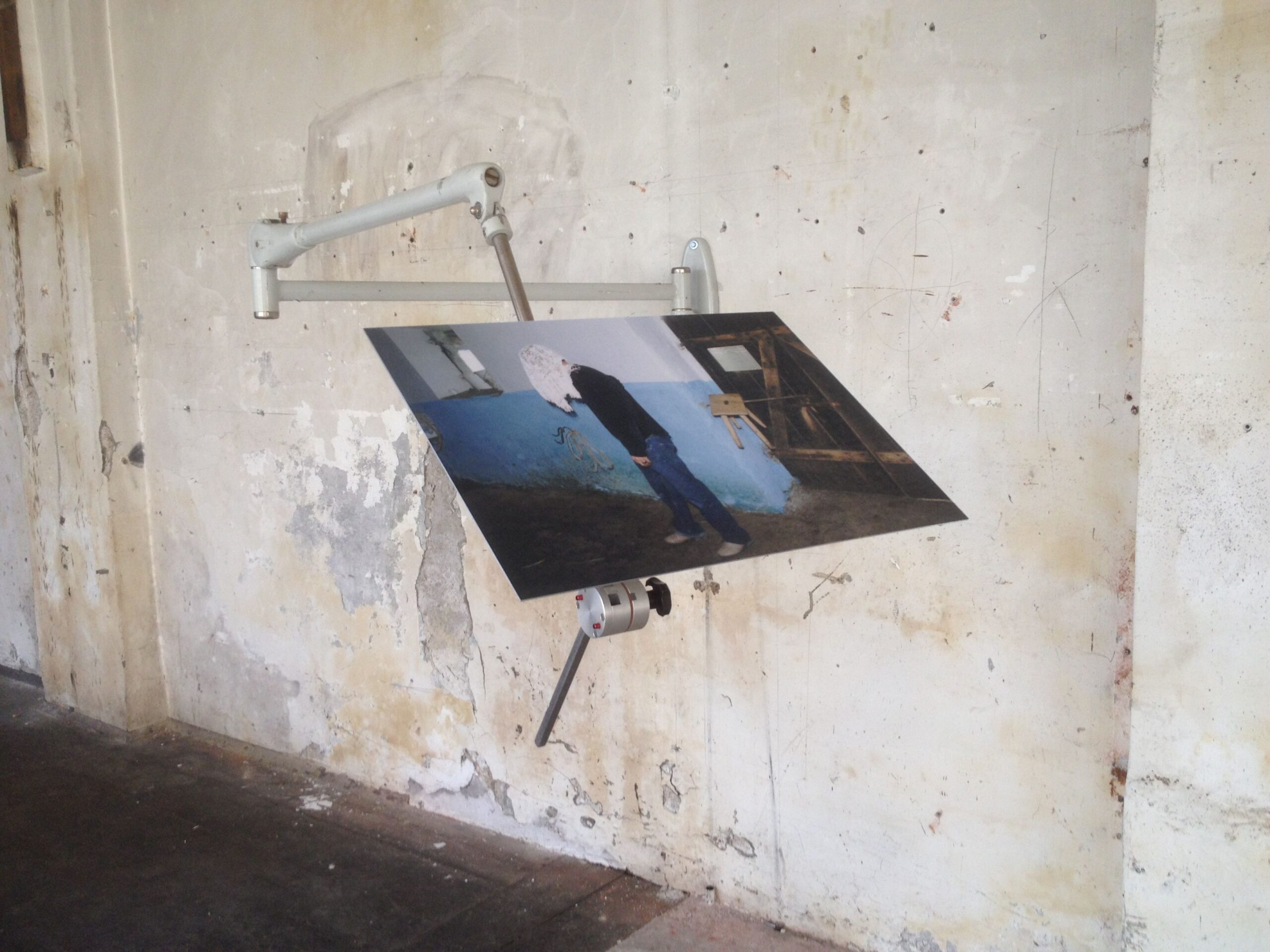ALL THESE SIGNS… OVERWRITING THE SUBJECT
While the two parts in the formulation of the title to this joint exhibition of works by Georgia Creimer and Iris Andraschek implies an encounter between two contrary positions it is above all their shared affinity for public space that connects the work of these two artists.
Georgia Creimer used her smartphone’s camera to take photographs on roads and the ground of traces of the animal in the urban context — in short: dogs’ piss stains. She subsequently reworked these photographs, cropping the stains to make them the sole contents of the images finally put on show printed on watercolour paper. The background of her intense engagement with painting makes this approach particularly confrontational, although there is on the one hand a strong allusion to abstract tendencies within the medium, on the other a gesture of abstract immediacy which is understood in retrospect as liberating. Entirely in Duchamp’s sense, in this work the artist subscribes to the exploration of the everyday, of the banal. However she does not do this to ascribe it to a status quo in art but rather to use the medium of photography to adapt it to the formal language of another medium. In this case, this process of transformation is an exclusively photographic one while the act of cropping the contents of images is historically fundamentally bound to the viewer and their potential for transcendence through a relationship to the resulting frontality. The signature strokes of Georgia Creimer lend photography as a medium, here, not only an unambiguously subversive character but also maintain an equilibrium between their intermedial conceptual possibilities. While the artist aspires to organise the chaos within familiar-looking banalities she transforms the external significance of the piss stain and bestows existence as a signifier upon it — here a sign of the inner organisation that only comes to bear for the viewer in the first-hand experience of reception. Her objects, created simultaneously, must be understood as analogous to this process, for which she enlarged the outlines of the stains to an approximately realistic size before transferring them as shapes onto watercolour paper mounted on a 2cm thick laminated plastic panel. This was finally painted with several layers of light yellow glaze: once again there is a shift in symbolic value in-line with Georgia Cremer’s deliberations on form.
The method employed in Iris Andraschek’s works is, in contrast, essentially characterised by the capturing in photographs of the ritualised actions of people in public space, along with the impact on these of interventions installed in the space concerned. At times these two artists’ approaches mutually interact when the artist — as in the current exhibition — brings photographs that she had previously installed in public space back to the exhibition space in a paled and weather-beaten state. She does not simply endow these photographs with a new purpose, she renders a transitive process visible whose origins are to be found in the images of the real world. In its repetitive nature based on past ideals, the ritual simultaneously subscribes to — in Deleuze’s sense — the difference we are subjected to as subjects. The pure repetition, regardless of whether of the subject matter of the image or the form of the image, accordingly exists only in the object. The thought of the ritual as an artificial product created by people can not be pursued in Iris Andraschek’s work, however, without its counterpart the natural cycle: wind and weather are the test of the photographic material, the alteration or even erasing of content and so of the subject matter, while the photographic piece itself is first endowed with life by this process so as to be capable of entering into a relationship with the artist’s own or another’s works in the exhibition space. This is shown by, among other things, the positioning of gridded metal structures in the gallery’s Raum2: just as — standing in public space — they had been allotted a display function for the photographs, so they acquire a further reading when installed in the gallery. Rosalind Krauss once stated that the inclusion of a grid in a space provides the viewer with an allusion to the ambivalence of the window as an enclosure as well as an opening. This is, in a parallel movement, not only applied in concrete terms to those photographs mounted on the trellis structures, Iris Andraschek also regards the medium in its processuality between inner and outer reality as a starting point for her many drawings.
Accordingly, both of these artists base their work on transformatory or transitive processes, whereby this transitory state is not only reflected but also itself becomes the subject of the work in question. The encounter between the two artists can be understood like an encounter in public space, based on freedom of movement in reading the individual signs with a simultaneous objective knowledge of their reciprocal potential to change.
Andreas Müller
